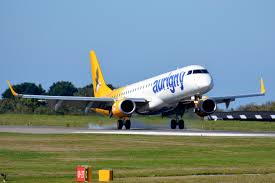Suddenly there was light, and you could see for miles. After months of behind-the-scenes to-ing and fro-ing, heated arguments among numerous States entities and intense frustration among islanders, we finally have some hard information about one of our most famous assets, Aurigny.
We are a long way short of remedies for its woes, which include unforeseen fumbles with new aircraft, unpopular operating arrangements and eye-watering financial losses. But we have been blessed with some fresh information, some of it helpful, some of it begging more questions.
Thus:
- At last we have some financial accounts. They were signed off on 4 April, but were apparently held up while tenders were considered for the Guernsey-Alderney route which Aurigny currently operates. Without an injection of £6.4m from the States, Aurigny’s financial position would have been worse than awkward. The business made a loss of £5.2m, and its liabilities at year-end outstripped assets by £6m.
- The company is discussing with manufacturers the purchase of aircraft with “enhanced vision systems” which would enable better performance is foggy conditions. The airline said it had 60 days of weather-related disruption in 2017. The airline’s fleet is ageing, and it reckons the investment would result in savings over ten years.
- The States, in the form of the Committee for Economic Development, has proposed that Guernsey have two essential lifeline routes whose operators sign up to a “public service obligation” and receive financial support. The proposed routes are Guernsey-Gatwick and Guernsey-Alderney.
- Relatedly, and no less significant a decision, it has proposed an open skies policy on other routes, where operators would not be required to have a Guernsey air transport licence. The proposal includes potential offers of financial support for new routes which would not otherwise start or last. Both these sets of arrangements will be reviewed in five years’ time, in 2023.
A number of other interesting points have emerged from this week’s mini-torrent of information:
- The decisions on air transport licencing were framed by a report from the consultants Frontier Economics. They said that Guernsey-Gatwick could be a “quasi-open skies” route if Guernsey had a longer runway. Yet nothing has surfaced this week to enlighten us about the runway question, which some believe is not only critical but the primary concern to be addressed. This issue is far from dead.
- Aurigny’s chairman says he had no notice of the open skies decision, and believes the approach is not right. “By itself it does not work,” he argues, essentially because Guernsey is a “sub-scale market.” But the real question is whether the Guernsey-Gatwick route could be run more effectively through a leading international airline using wet or dry lease arrangements – protecting Guernsey’s slots, ensuring capacity as well as economic benefit. This was a proposition contained in the previous Economic Development Committee’s vision document, which was almost immediately ditched. If as seems likely it is also a way of making Aurigny more efficient, it can hardly be ignored.
- It is widely believed that the airline is loss-making because of problems with the Dorniers on the Guernsey-Alderney route. The Aurigny accounts offer little enlightenment on this. The suspicion is that it is less the Dorniers themselves causing the losses, though the purchases were flawed, but the way the airline transitioned to them. If Aurigny is allocating these costs directly to the Guernsey-Alderney route, that seems unfair – mostly they are one-off costs the airline had to incur anyway given that the old Trislanders had to be dropped for safety reasons and the replacement had to be two-pilot aircraft. Meanwhile if you look at the accounts, it is interesting that of the airline’s total revenue of £44m, the biggest drain (£16m) was actually on landing and airport fees.
- It has been suggested that Aurigny is looking at the Airbus A319neo as a possible new jet aircraft. The tag neo stands for new engine option. Perhaps in hindsight it is no surprise that an Airbus 319 made approaches to Guernsey’s airport very recently. But while Airbus has a total of 30 orders currently, it appears to have had no deliveries. The aircraft has lower operating costs, reduced noise and reduced emissions. For Aurigny one question must surely be whether its experience of a single jet has convinced it of its efficacy operating about 100 miles at a time.
- New ATRs could also be acquired. Indeed, these appear to be the more likely candidate for the mooted enhanced vision systems. The investment would not only be in the aircraft themselves but also in the cockpit and on the ground approaches. Either way, Aurigny’s chairman believes leasing would only be better if it was cheaper than purchasing. He believes this isn’t the case. Others dispute that.
- Talk this week about a Guernsey-Heathrow route looks implausible. Heathrow’s capacity won’t expand with a third runway for many years. The airport won’t want ATRs. More likely, we’ll be flying to Jersey to catch BA jets to Heathrow and flying on from there – almost certainly more cheaply than the alternative.
- Minor points: The Committee’s proposals classify no route as “development” or “strategic”. Both terms were a core part of the vision document jettisoned late last year. This named Guernsey-Jersey, Guernsey-Southampton and Guernsey-Manchester as strategic. Meanwhile the hot issue of whether Alderney-Southampton ought to be a lifeline remains just that – hot – at least for that island’s tiny population.
It is almost impossible to assess this raft of information. It is undoubtedly welcome, and helps everyone to look forward rather than back. But in the case of the air links question, it is impossible to ignore the issue of how we got here. Apportioning blame is somewhat futile when there is so much to go round. We should simply note that the hierarchy of States entities involved in managing the issue covers no less than four bodies:
- the Committee for Economic Development, responsible for policy;
- the States Trading Supervisory Board, which holds the States shares in the airline, can set fare targets and influence airport charges;
- the Transport Licencing Authority, the agency which determines applications from airlines to come to Guernsey; and
- Aurigny’s own board, which is responsible for the airline’s day-to-day operations.
Above all, there was the fruitless intervention in the process of the Policy & Resources Committee back in 2016-2017. Being responsible for the island’s finances, it took on the task of reviewing the increasingly difficult position at Aurigny. The outcome was two different reports, and the task was thrust back into the arms of the Economic Development Committee, which for other reasons was later replaced. We are finally getting back to where we should have been then.







